We frequently test-charge EVs in public on DC “fast charge” systems. In most cases, we are disappointed. Our reports, though factual, are picked apart in comments by EV advocates (EVangelists) who feel that we somehow rig the circumstances and the results of the test to cast EVs in a poor light. Here are a few of our past stories on EV charging, most of which are based on our real-world data and experiences.
- EV Charging Experts Are Still Stymied & Frustrated By Public Fast Charging
- Ford’s Blue Oval Network of Chargers Is Fantastic - Our Real-World Test Results
- Ford Dealers Are Driving Into the Future of EVs With Massive Charging Investments
- Busting the Myth That an EV Can Be Meaningfully DC Fast Charged While Using a Bathroom or Grabbing Lunch
- Charging an Electric Vehicle In Public Can Cost Triple What Fueling Up a “Gas-Guzzler” Does
Related Story: 5 Reasons Public DC Charging Is Slower Than Expected
How We Conducted This Test
- We searched for the highest-power DC fast charger in our area and found one labeled as “Hyper-Fast 350kW.”
- We began our charging session at 50% state of charge (SOC,) smack dab in the sweet spot of the charging curve.
- We used a $70K (expensive) 2025 model-year vehicle advertised as capable of putting up to 350 kW of input power to use.
- The vehicle’s battery is advertised as having an “800-volt battery system for ultra-fast charging.” The vehicle is advertised as being capable of “charging from 10 to 80% in 18 min.”
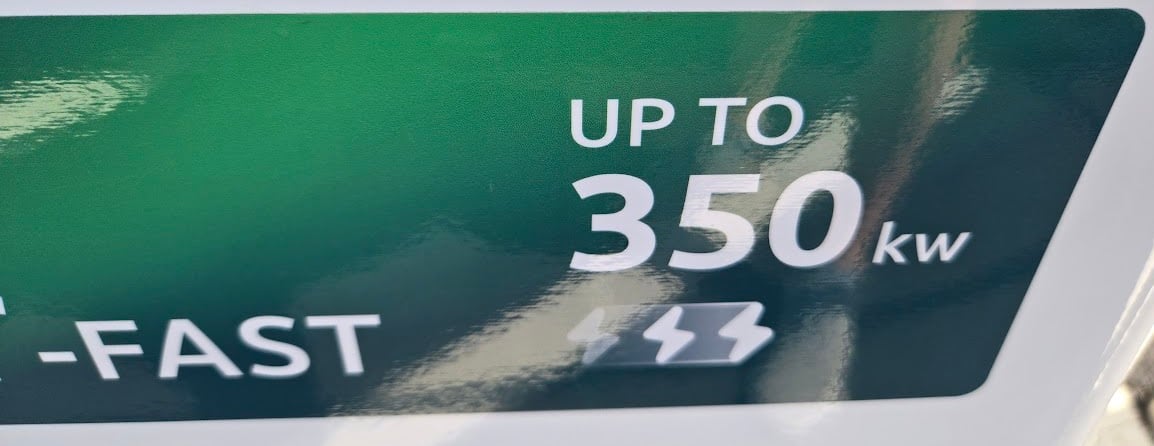 DC “Fast Charging” Is Anything but Fast
DC “Fast Charging” Is Anything but Fast
As you can see, the electric vehicle advocacy movement desperately wants you to think that DC “Fast Charging” is not just fast, but, in the words of the charger company, “Hyper-Fast.” In the words of the carmaker, “Ultra-fast.” These adjectives are are intended to make you think charging is not just fast, but crazy, wicked, and unbelievably fast. But it’s not. It is one of the slowest ways to add energy to a modern green vehicle.
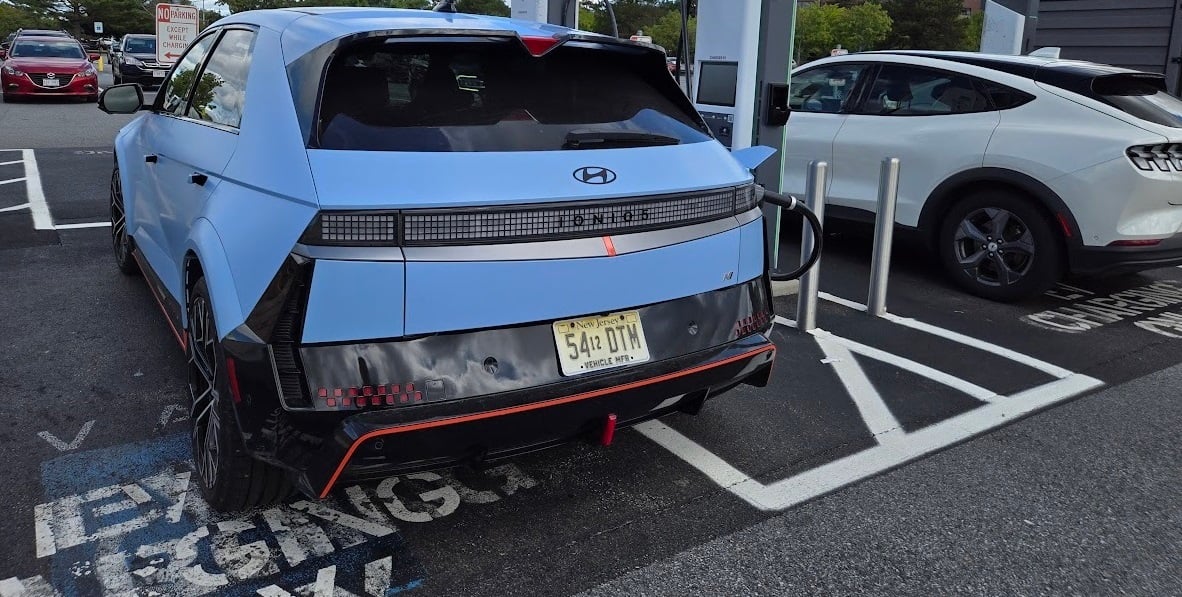 The Test Scenario
The Test Scenario
Our 2025 Hyundai Ioniq Ioniq 5 N media test vehicle was chosen specifically because it is a new model and has the fastest charging specs. We LOVE this vehicle. In our full review of the Ioniq 5 N, we detailed why it is the best 4-door sport/muscle car one can buy today. It’s almost surreal how fantastic it is to drive. If we had a 4-door performance car budget of $70K, this is the model we would choose.
We selected the charging station because it offered the highest charging speed in Metro Boston we could find—350 kW. Actually, if you look closely, the signage notes in fine print, “up to” in small font above the large print 350 kW number. Hmm. That would prove to be true, unfortunately.
We chose to conduct the charge late in the morning on a Thursday during the summer vacation period so that we would have access to the charger. We got the last available space, and another Ioniq 5 owner arrived to wait for us to finish so he could charge his own car.
We chose a state of charge well below 80% so that being in the wrong part of the charge curve would not spoil the test. Charge curve is a little-advertised reality of charging. EVs don't charge at their full rate from 0% state of charge (SOC) to 100% SOC. The charge spec you see is often just for part of the range of the SOC. As one approaches 80% SOC, the rate at which the car can accept a charge drops off dramatically. This is why you see “...to 80%” as the specification manufacturers advertise. It’s also why it is good etiquette to discontinue charging at 80% so other EV owners don't have to wait for you to finish trickle charging up to 100% SOC.
We chose to charge for exactly 10 minutes for two reasons. First, it is 5X the time it takes to fill up a green vehicle like a hybrid-electric vehicle with liquid fuel. Second, it is about the time it takes to use a bathroom if you run. We did, in fact, had a person on hand run to the nearby bathroom and back, and it took the entire 10 minutes.
The Test Results
The vehicle had an SOC of 50% when we arrived, and after 10 minutes, it had risen to 66% SOC. Therefore, we gained about 16% SOC in ten minutes. This equates to roughly 47 miles of added range if you divide the total battery capacity of 84 kWh by the energy added, which the charger told us on the screen and via our app was 18.1 kWh. We have added a screen shot of the charging session summary under this story.
We paid $0.64/kWh. The total cost was $12.30, including tax, and $11.58 without sales tax. We did the math and came up with about 24 cents per mile for energy. That is more than triple the cost per mile to power a vehicle like a Toyota RAV4 Hybrid or a Hyundai Tucson Hybrid. Another way to think about it is that it is about the same as if gas were to cost $10 per gallon. In Metro Boston, gas costs about $3.15 right now.
Comparison to Fueling Up a Liquid & Electricity-Powered Green Vehicle
Adding just 47 miles of range to a vehicle in ten minutes is one of the slowest possible ways to power up a green vehicle. Contrast this with adding about that same amount of energy to a Toyota RAV4 Hybrid or Toyota Venza Hybrid. It would take roughly 15 seconds to squirt in a gallon or so of liquid fuel. So, powering up a battery-electric vehicle at a DC “Fast Charger” is about ten to twenty times slower than adding energy to a hybrid-electric vehicle.
The Big Lie - We Never Saw 350 kW
While we charged, we stayed at the station and observed the power delivery rate. Rather than the “Hyper-fast” or “Ultra-fast” charging we expected, we saw a maximum rate of 145 kW, but it was well below 100 kW for much of the charge session. We expected this might happen since we have charged at many DC “Fast charger” locations operated by different brands using other cars, and none of them has ever delivered the full power it implies in any of our many tests.
Summary - Why Lie About EVs?
Battery-electric vehicles offer many advantages. They include:
- Better torque for the dollar
- Smoother powertrains
- Quieter powertrains
- A satisfying driving experience
- The ability to charge at home
- The ability to be powered by your own home solar array
Ioniq 5 Owner Offers His Experience Charging
While we charged, we spoke with the 2023 Ioniq 5 Limited owner, who arrived and was waiting to charge. He was the person who ran to the bathroom and back. We asked if lower-than-expected charging rates and longer-than-expected charging times were common in his experience, and he confirmed they were. Our observations are not unusual.
Let’s Not Blame the Car
Despite Hyundai using the term “Ultra-fast,” we take no issues at all with the Ioniq 5 N’s charge times. Hyundai is a leader in EV technology, and the company has fielded cars that can accept a charge faster than the charging companies can deliver one. In our experience, testing EVs on public "fast" chargers since about 2021, the public EV charging network cannot be depended upon for speedy charges when you want one. This is exactly why we don't show up with a 20% charge remaining. We are afraid to let the car’s SOC go too low, since charging is unreliable. Another note about the Ioniq 5 N. It can accept the full 40 amps of power delivery from our Emporia Level 2 home charger. Many modern EVs we test cannot do so. So the Ioniq 5 N charges faster in our garage than many other cars (the Nissan Ariya is just one example).
Why Do EV Advocates Over-Promise?
Why do EVangelists feel the need to invent benefits that are not real? Why is super-slow power addition in the form of DC charging called “Fast” when it is orders of magnitude slower than adding energy to other green vehicles, such as hybrid-electric vehicles? Why do EV advocates feel the need to pretend that electricity is a lower-cost energy source than liquid fuels (gasoline and ethanol blends), when, in many parts of America where EVs are popular, that is simply not the case?
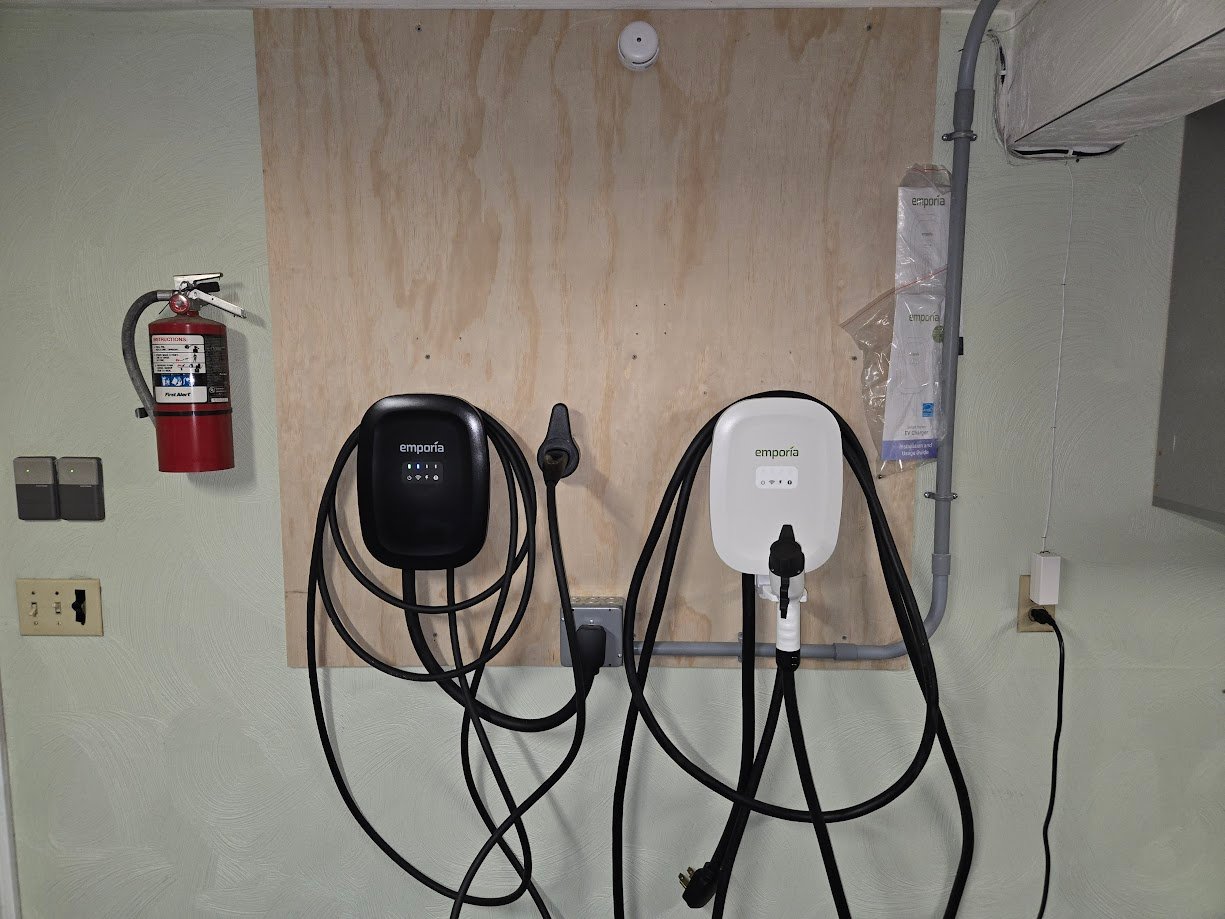 Who Cares About Public DC Charging Anyway?
Who Cares About Public DC Charging Anyway?
Public charging of any type is a “charge of last resort” for many EV owners who enjoy the luxury of an at-home charger of their own. We understand that. I have two level 2 chargers (NACS and J-Plug) in my garage, and I also have a portable L2 charger with each of the two connectors. I only charge in public to test chargers and EVs and report on the results. I simply don't bother to take battery-electric vehicles to places that REQUIRE charging in public. It’s not worth the hassle and added cost. However, many vehicle shoppers who cannot charge at their residences require public charging to own a battery-electric vehicle. About 43% of residences in America are multi-family homes, condos, or apartments. These resident car owners may not have the option of home EV charging. Furthermore, many EV owners travel outside of their vehicle's radius of operation from home charging. Since on-the-go Level 2 charging is utterly worthless, they need to use DC fast charging. That’s why we are discussing this topic.
Expert’s Conclusion - Public DC Charing is Super Slow and Incredibly Expensive
My EV expert credentials are available on LinkedIn. I’ve got the education, experience, and access to new EVs to make certain judgments based on facts and first-hand testing. My conclusion is that DC charging is over-hyped and will never match the benefits of liquid fuels in green vehicles. Please add your own thoughts in the comments section below. We’re certain we must have violated one or more of the myriad rules and best practices related to public charging, and we are always happy to learn more about the subject.
If you'd like to add a comment under this story, please note that our comments section has returned and is in bold red at the bottom of the page.
John Goreham is an experienced New England Motor Press Association member and expert vehicle tester. John completed an engineering program with a focus on electric vehicles, followed by two decades of work in high-tech, biopharma, and the automotive supply chain before becoming a news contributor. In addition to his eleven years of work at Torque News, John has published thousands of articles and reviews at American news outlets. He is known for offering unfiltered opinions on vehicle topics. You can connect with John on Linkedin and follow his work at our X channel. Please note that stories carrying John's by-line are never AI-generated, but he does employ Grammarly grammar and punctuation software when proofreading.
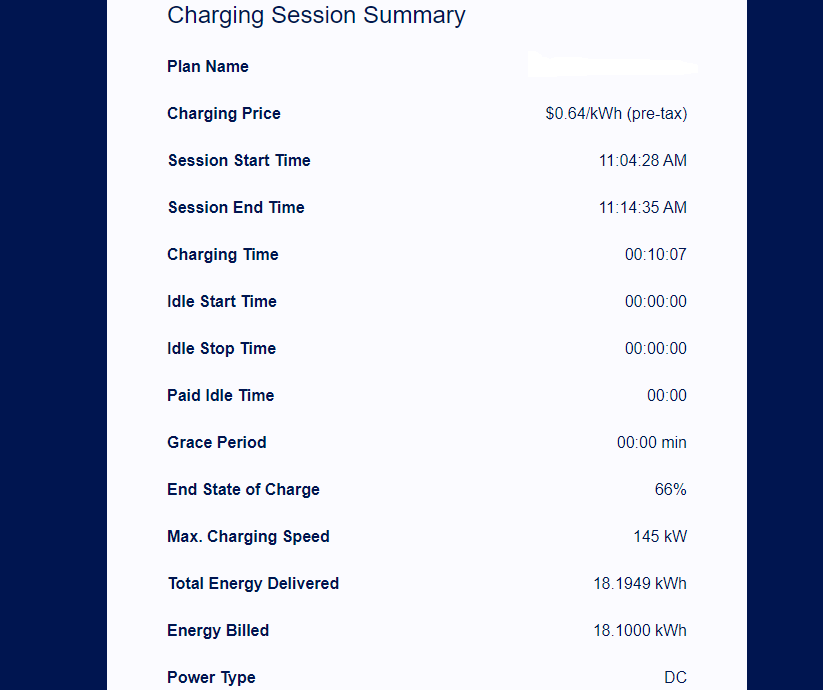
Images by John Goreham.

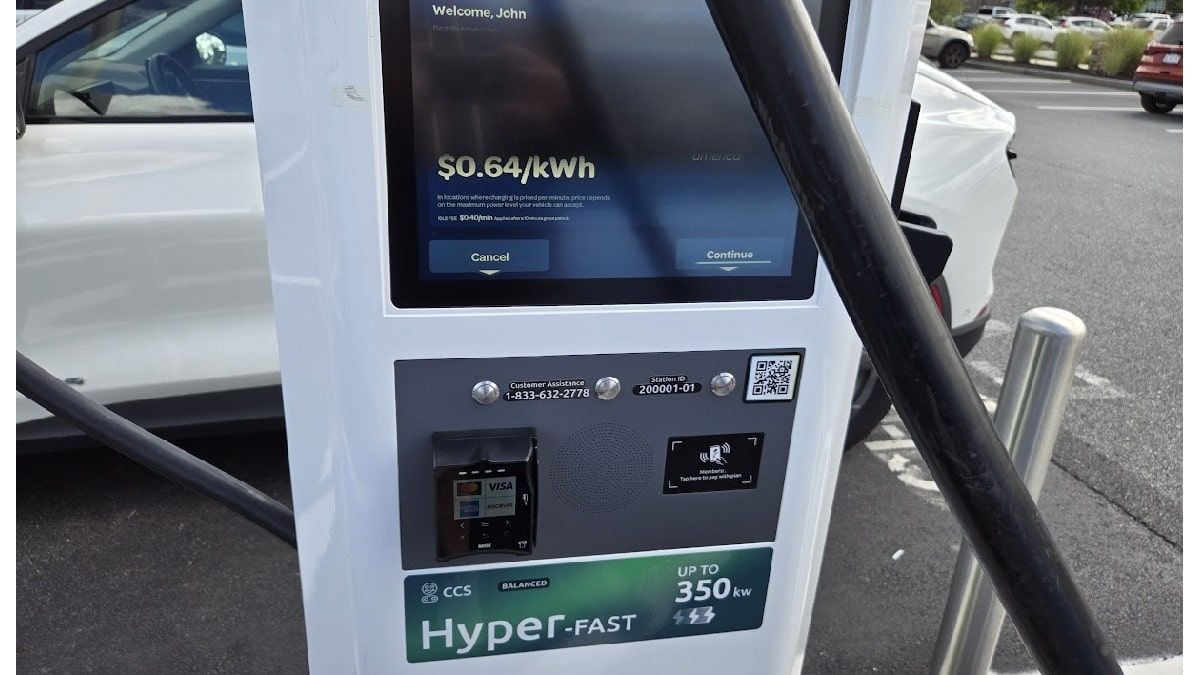




Comments
Will Never buy an electric…
Permalink
Will Never buy an electric vehicle. A hybrid maybe.
This article is so accurate…
Permalink
This article is so accurate. I am new to the EV community with a 2023 Mustang Mach E. Love the car, but fast charging away from home is ridiculously expensive. EV’s are not practical for road tripping, especially in cold weather. I am finding range reduction of about 30% traveling at 75 mph with no climate control. Add heat and range driving on the highway is reduced 50%. I can’t imagine the current technology will ever be widely accepted in the USA before real range is improved and public fast charging is $ competitive with gasoline. Right now they are great city cars, but that is a very limited market. I’m just happy I could afford to keep my old IC car.
I also agree that EV market…
Permalink
I also agree that EV market is not there yet, unless people charge exclusively at home. Public charging is simply way too expensive and slow, while the stalls are extremely limited and often quite a distance away. I would never understand the purchase decision for an EV and have to deal with headaches of range anxiety, higher insurance premiums for EV, and much slower fill up compared to a gas vehicle... also EV owners are probably never going to charge it past 80 percent for longevity due to how expensive those batteries are, so they won't ever achieve the full range as advertised... It's all lies and more lies by EV manufacturers and they simply care about profiting off unsuspecting consumers.